Transform Your Confidence: 7 Key Benefits of Hairline Transplant
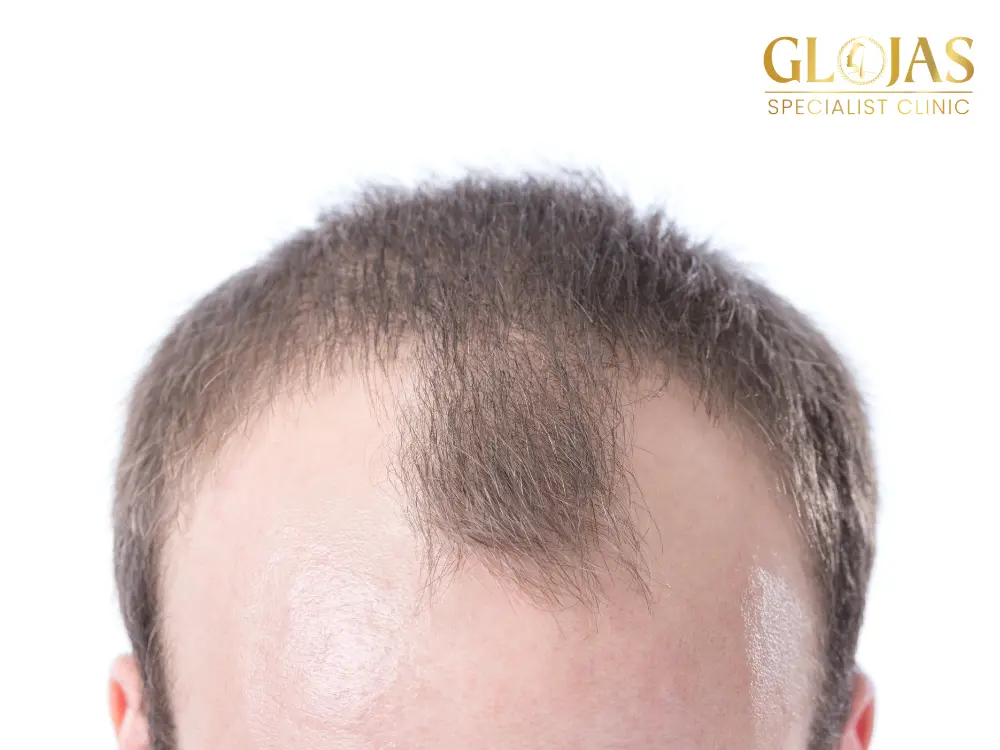
Hairline transplant procedures have gained significant popularity in recent years, offering a life-changing solution to individuals struggling with hair loss. If you’re considering this procedure, it’s essential to understand how it works, its benefits, and what to expect during and after the surgery. In this article, we’ll delve into the intricacies of a hairline transplant, explore its advantages, and answer some of the most common questions to help you make an informed decision. Understanding Hairline Transplant: What It Is and How It Works A hairline transplant is a surgical procedure designed to restore hair to areas of the scalp where hairline thinning or balding has occurred. This process typically involves harvesting hair follicles from a donor site—usually the back or sides of the head—where hair is more resistant to balding, and transplanting them to the hairline area. How Is Hairline Transplant Performed? The procedure is generally performed under local anesthesia and can be completed in a few hours, depending on the extent of the hair loss and the number of grafts required. There are two main methods used for hairline transplantation: Follicular Unit Transplantation (FUT): In this method, a strip of scalp containing healthy hair follicles is removed from the donor area and dissected into individual follicular units, which are then transplanted to the balding area. Follicular Unit Extraction (FUE): This method involves extracting individual hair follicles directly from the donor area and transplanting them into the recipient area. FUE is less invasive and leaves minimal scarring compared to FUT. Benefits of Hairline Transplant: Why It’s Worth Considering Hairline transplants offer several significant benefits that can positively impact both your appearance and self-esteem. Here are seven key benefits of opting for a hairline transplant: 1. Natural-Looking Results One of the most compelling reasons to consider a hairline transplant is the natural-looking results it provides. Skilled surgeons meticulously place each hair follicle to mimic the natural growth pattern of your hair, ensuring a seamless and undetectable hairline. 2. Permanent Solution to Hair Loss Unlike temporary solutions such as wigs or hairpieces, a hairline transplant offers a permanent solution to hair loss. The transplanted hair follicles are resistant to the effects of DHT (dihydrotestosterone), the hormone responsible for hair loss, which means that the results of the transplant will last a lifetime. 3. Boost in Self-Confidence Hair loss can significantly impact self-esteem and confidence. A successful hairline transplant can restore a more youthful appearance, leading to improved self-confidence and a better quality of life. The psychological benefits of feeling good about your appearance should not be underestimated. 4. Low Maintenance Once the transplanted hair follicles have settled and begun to grow, they require no special maintenance beyond your usual hair care routine. This low-maintenance aspect is one of the many reasons why hairline transplants are a popular choice among those seeking a long-term solution to hair loss. 5. Cost-Effective in the Long Run While the initial cost of a hairline transplant may seem high, it is a cost-effective solution in the long term. Unlike temporary treatments that require ongoing purchases, such as hair growth serums or wigs, a hairline transplant is a one-time investment that provides permanent results, saving you money over time. 6. Minimal Downtime and Recovery Advancements in hair transplant techniques, particularly with the FUE method, have resulted in minimal downtime and a faster recovery process. Most patients can return to their normal activities within a few days, making it a convenient option for those with busy lifestyles. 7. Improved Hair Density and Volume Hairline transplants not only restore your hairline but also improve the overall density and volume of your hair. This leads to a fuller and more youthful appearance, enhancing your overall look and boosting your confidence. What to Expect During the Recovery Process After undergoing a hairline transplant, it’s essential to understand the recovery process to ensure optimal results. While recovery times can vary, here’s a general overview of what to expect: Immediate Post-Procedure Care In the first few days following the surgery, you may experience some swelling and redness around the transplant area. This is normal and typically subsides within a week. Your surgeon will provide specific aftercare instructions, including how to clean the scalp and avoid activities that might disturb the grafts. Hair Shedding and New Growth It’s common for the transplanted hair to shed within the first few weeks after the procedure. This is a normal part of the healing process, as the new hair follicles enter a resting phase before beginning to grow new hair. Full results from a hairline transplant typically take six to twelve months to become visible, as the new hair grows and thickens over time. Long-Term Maintenance Once the new hair has fully grown in, it will behave just like the rest of your hair. Regular washing, cutting, and styling can be resumed, and no special treatments are required. The transplanted hair will continue to grow naturally for a lifetime, providing a permanent solution to hairline recession. FAQs About Hairline Transplant 1. Is a hairline transplant suitable for everyone? Not everyone is an ideal candidate for a hairline transplant. The best candidates are those with sufficient donor hair and good overall health. A consultation with a qualified surgeon is essential to determine your suitability for the procedure. 2. How painful is the hairline transplant procedure? Most patients report minimal pain during a hairline transplant, as the procedure is performed under local anesthesia. Some discomfort may be experienced during the recovery period, but this can usually be managed with prescribed pain medication. 3. Are there any risks or side effects associated with hairline transplants? As with any surgical procedure, there are risks associated with hairline transplants, including infection, scarring, and unnatural-looking results if not performed by a skilled surgeon. However, these risks are minimized when the procedure is carried out by an experienced professional. 4. How long does it take to see the final results of a hairline transplant? Full results from a hairline transplant are
5 Life-Changing Benefits of a Tummy Tuck You Should Know About

For many people, achieving a flat, toned abdomen can be challenging, even with a strict diet and exercise regimen. Factors such as aging, genetics, pregnancy, and significant weight fluctuations can result in excess skin and fat in the abdominal area that are resistant to conventional methods. This is where a tummy tuck can make a significant difference. In this article, we’ll explore the essential aspects of tummy tuck surgery, its benefits, and what you should know before considering this procedure. What Is a Tummy Tuck? A tummy tuck, medically known as abdominoplasty, is a surgical procedure designed to remove excess skin and fat from the abdomen while tightening the underlying muscles. The result is a smoother, firmer abdominal profile that can dramatically enhance a person’s appearance and self-confidence. Types of Tummy Tucks There are different variations of tummy tuck surgery, each tailored to meet the specific needs of the patient: Full Tummy Tuck A full tummy tuck is the most comprehensive form of the procedure. It involves an incision made from hip to hip, just above the pubic area, and another around the navel. This allows the surgeon to remove a significant amount of excess skin and fat, tighten the abdominal muscles, and reposition the belly button for a natural appearance. Mini Tummy Tuck A mini tummy tuck is ideal for patients with a smaller amount of excess skin and fat localized below the navel. The procedure involves a smaller incision, and there is no need to reposition the belly button. This option offers a shorter recovery time and less scarring compared to a full tummy tuck. Extended Tummy Tuck An extended tummy tuck is designed for patients who have excess skin and fat that extends beyond the abdomen to the flanks or lower back. This procedure includes a longer incision, allowing for the removal of excess tissue from a larger area, resulting in a more comprehensive contouring effect. 5 Life-Changing Benefits of a Tummy Tuck Opting for a tummy tuck can provide numerous benefits beyond just improving your appearance. Here are five life-changing advantages that make this procedure worth considering: 1. Enhanced Abdominal Tone and Contour One of the most obvious benefits of a tummy tuck is the improved appearance of the abdomen. By removing excess skin and fat, and tightening the abdominal muscles, the procedure results in a flatter, more toned stomach. This can be particularly beneficial for individuals who have lost a significant amount of weight or women who have had multiple pregnancies, as these factors can stretch the abdominal muscles and skin beyond their natural elasticity. 2. Improved Posture Weak abdominal muscles often lead to poor posture, which can result in back pain and discomfort. By tightening the abdominal muscles, a tummy tuck can provide better core support, leading to improved posture. Many patients report reduced back pain and an overall improvement in their physical comfort following the surgery. 3. Reduction in Stress Urinary Incontinence (SUI) Stress urinary incontinence (SUI) is a condition characterized by uncontrollable leakage of urine during physical activities such as coughing, sneezing, or exercising. It is a common issue for women, particularly after childbirth. A tummy tuck, particularly when combined with other pelvic floor surgeries, can help alleviate the symptoms of SUI by providing additional support to the pelvic region. 4. Correction of Ventral Hernias A ventral hernia occurs when the intestine or abdominal tissue pushes through the abdominal wall, creating a bulge. This condition can be caused by factors such as obesity, previous surgeries, or significant weight loss. A tummy tuck can correct a ventral hernia by reinforcing the abdominal wall, preventing the recurrence of the hernia and providing a more stable abdominal structure. 5. Boost in Self-Confidence and Quality of Life Beyond the physical benefits, a tummy tuck can have a profound impact on a patient’s mental and emotional well-being. Many individuals feel more confident and satisfied with their appearance after the surgery, which can translate into improved self-esteem and a better quality of life. This boost in confidence often encourages patients to maintain their results through a healthier lifestyle, including regular exercise and a balanced diet. What to Expect During and After a Tummy Tuck Understanding the tummy tuck procedure and recovery process is crucial for those considering this surgery. The Tummy Tuck Procedure A tummy tuck is usually performed under general anesthesia and can take between two to five hours, depending on the extent of the surgery. Here’s a general outline of what the procedure involves: Anesthesia: The surgeon will administer general anesthesia to ensure the patient is comfortable and pain-free during the procedure. Incision: The type and length of the incision depend on the type of tummy tuck being performed. For a full tummy tuck, an incision is typically made from hip to hip, while a mini tummy tuck requires a shorter incision. Muscle Tightening: The surgeon will tighten the underlying abdominal muscles by stitching them together, creating a firmer abdominal wall. Excess Skin and Fat Removal: The surgeon will remove the excess skin and fat, pulling the remaining skin taut over the abdomen. Repositioning the Belly Button: In a full tummy tuck, the belly button is repositioned to ensure it remains in a natural location on the abdomen. Closing the Incisions: The incisions are closed with sutures, and the area is bandaged to support the healing process. Recovery and Results The recovery period following a tummy tuck varies depending on the individual and the extent of the surgery. Here’s what you can generally expect: Initial Recovery: Most patients can return home the same day or the day after the surgery. You will need to wear a compression garment to reduce swelling and support the abdomen as it heals. Pain Management: Pain and discomfort are common during the first few days post-surgery, but these can be managed with prescribed pain medication. Activity Restrictions: It’s important to avoid strenuous activities, including heavy lifting and vigorous exercise, for at least six weeks. Light activities and walking
7 Proven Strategies to Effectively Treat Hyperpigmentation
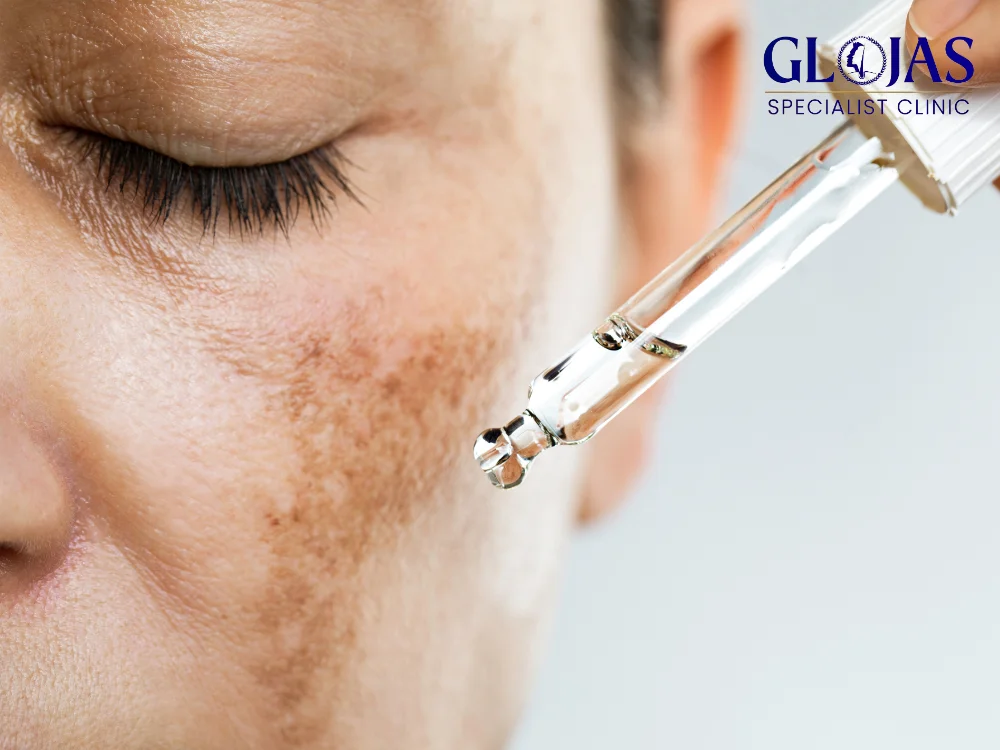
Hyperpigmentation is a common skin concern that can affect anyone, regardless of age, gender, or skin type. Characterized by darkened patches or spots on the skin, hyperpigmentation can be caused by a variety of factors, including sun exposure, hormonal changes, and inflammation. While it may seem challenging to treat, there are several effective strategies that can help reduce the appearance of hyperpigmentation and restore an even skin tone. In this article, we will explore 7 proven methods to manage and treat hyperpigmentation. What Is Hyperpigmentation? Hyperpigmentation refers to the darkening of the skin caused by an overproduction of melanin, the pigment responsible for skin color. This condition can manifest in different forms, such as age spots, melasma, and post-inflammatory hyperpigmentation (PIH). The dark patches often appear on areas frequently exposed to the sun, such as the face, hands, and arms. Common Causes of Hyperpigmentation Sun Exposure: Prolonged exposure to ultraviolet (UV) rays from the sun is a leading cause of hyperpigmentation. UV rays stimulate melanocytes (the cells that produce melanin), leading to dark spots or sunspots. Hormonal Changes: Hormonal fluctuations, especially during pregnancy or while taking oral contraceptives, can lead to melasma, a type of hyperpigmentation characterized by dark, irregular patches on the face. Skin Inflammation: Any skin injury or inflammation, such as acne, eczema, or psoriasis, can trigger post-inflammatory hyperpigmentation. This type of hyperpigmentation occurs as the skin heals and produces excess melanin in response to the injury. Medications: Certain medications, such as chemotherapy drugs and antibiotics, can cause hyperpigmentation as a side effect. 7 Proven Strategies to Treat Hyperpigmentation 1. Consistent Use of Sunscreen The first and most crucial step in treating hyperpigmentation is protecting your skin from further sun damage. A broad-spectrum sunscreen with an SPF of 30 or higher should be applied every day, even on cloudy days or when indoors. Sunscreen prevents UV rays from aggravating existing hyperpigmentation and helps to prevent new dark spots from forming. 2. Topical Treatments with Hydroquinone Hydroquinone is one of the most effective ingredients for treating hyperpigmentation. It works by inhibiting the enzyme tyrosinase, which is involved in the production of melanin. Over-the-counter products usually contain 2% hydroquinone, while stronger formulations (up to 4%) are available by prescription. Regular use can significantly lighten dark spots, but it should be used under the guidance of a dermatologist to avoid potential side effects. 3. Incorporate Retinoids into Your Routine Retinoids, derivatives of vitamin A, are powerful agents that promote cell turnover and help fade hyperpigmentation. By encouraging the shedding of old, pigmented skin cells and the growth of new ones, retinoids can gradually even out skin tone. They are available in various forms, from over-the-counter retinol to prescription-strength tretinoin. However, retinoids can be irritating, so it’s essential to introduce them slowly into your skincare routine and use them in conjunction with sunscreen. 4. Try Vitamin C for Brightening Vitamin C is a potent antioxidant known for its skin-brightening properties. It helps reduce hyperpigmentation by inhibiting melanin production and protecting the skin from free radical damage. Vitamin C serums are particularly effective when applied in the morning before sunscreen, as they can enhance the skin’s defense against UV rays and environmental pollutants. 5. Chemical Peels for Exfoliation Chemical peels are a professional treatment option that can effectively address hyperpigmentation. They involve applying a chemical solution, such as glycolic acid, salicylic acid, or trichloroacetic acid (TCA), to exfoliate the top layers of the skin. This process removes pigmented cells and promotes the growth of new, evenly-toned skin. Depending on the severity of the hyperpigmentation, a dermatologist may recommend a series of peels for optimal results. 6. Consider Laser Therapy Laser therapy is another effective treatment for hyperpigmentation, especially for stubborn or deep-seated dark spots. Lasers work by targeting melanin in the skin, breaking it down so the body can naturally eliminate it. There are various types of laser treatments available, such as fractional lasers and intense pulsed light (IPL) therapy. Consulting with a qualified dermatologist is essential to determine the best laser treatment for your skin type and condition. 7. Maintain a Healthy Lifestyle A healthy lifestyle can significantly impact the appearance of your skin. A diet rich in antioxidants, vitamins, and minerals supports skin health and can help prevent hyperpigmentation. Foods like berries, leafy greens, nuts, and fish are high in nutrients that combat oxidative stress and inflammation, both of which can contribute to hyperpigmentation. Additionally, staying hydrated, getting adequate sleep, and managing stress are important for maintaining clear, radiant skin. Frequently Asked Questions about Hyperpigmentation What is the fastest way to get rid of hyperpigmentation? The fastest way to reduce hyperpigmentation often involves a combination of treatments, including topical products (like hydroquinone and retinoids), chemical peels, and laser therapy. However, results can vary depending on the severity of the condition and individual skin response. Can hyperpigmentation go away on its own? In some cases, hyperpigmentation may fade over time, especially if it’s caused by temporary factors like acne or minor injuries. However, more persistent forms, like melasma or sunspots, typically require treatment to see significant improvement. Is hyperpigmentation permanent? Hyperpigmentation is usually not permanent, but it can be stubborn and take months to improve with consistent treatment. Early intervention and sun protection are key to preventing permanent discoloration. Can I treat hyperpigmentation at home? Yes, many over-the-counter products can effectively treat mild hyperpigmentation. Ingredients like vitamin C, retinoids, and niacinamide can be used at home. However, for more severe cases, professional treatments may be necessary. Are there any risks associated with hyperpigmentation treatments? Some treatments for hyperpigmentation, such as hydroquinone or laser therapy, may cause side effects like skin irritation, redness, or, in rare cases, worsening pigmentation. It’s important to consult with a dermatologist before starting any new treatment to ensure it’s safe and appropriate for your skin type. How long does it take to see results from hyperpigmentation treatments? Results from hyperpigmentation treatments can take anywhere from a few weeks to several months, depending on the
Tanam Rambut FUE: Spesialis di Indonesia

Spesialis Transplantasi Rambut FUE Indonesia Klinik rawatan rambut di Tanam Rambut FUE Indonesia merupakan salah satu klinik estetik yang telah memberi khidmat perawatan luar biasa selama lebih dari 26 tahun. Dengan pengalaman yang luas, mereka mengkhususkan diri dalam solusi untuk masalah rambut gugur serta perawatan estetika lainnya. Pakar rambut dan pengetahuan mendalam ini memungkinkan mereka untuk menawarkan pendekatan yang tepat dan efektif bagi setiap pasien, memastikan hasil yang memuaskan dan penampilan yang lebih percaya diri. Dengan perkembangan teknologi dan teknik terbaru, dokter di Klinik Tanam Rambut FUE Indonesia ini terus memperbarui keterampilan dan prosuder mereka, sehingga dapat memberikan rawatan yang berkualiti tinggi. Setiap prosedur dilakukan dengan perhatian penuh terhadap detail, menjadikan pengalaman pesakit tidak hanya aman, tetapi juga nyaman. Penting bagi pesakit untuk mendapatkan konsultasi yang mendalam sebelum menjalani prosedur, di mana dokter mereka akan menilai kondisi rambut dan kulit kepala serta memberikan saran yang sesuai. Dengan komitmen terhadap kualiti dan kepuasan pesakit, dokter spesialis ini menjadi pilihan utama bagi banyak orang yang mencari solusi untuk masalah rambut gugur. Dokter Spesialis Tanam Rambut FUE Indonesia Berpengalaman Di Tanam Rambut FUE Indonesia telah terdiri daripada Pakar Tanam Rambut yang memiliki FELLOW pelopor dari International Society of Hair Restoration Surgery (ISHRS) dan juga Diplomate pelopor dari American Board of Hair Restoration Surgery (ABHRS) di Indonesia. Mereka ini amatlah berkomiten tinggi dalam memberi perkhidmatan dan penyelesaian yang terbaik kepada individu yang mencari solusi untuk masalah rambut gugur. 1. Professor Dato’ Dr. JasG Profesor Dato’ Dr. JasG adalah pendiri dan ketua visioner GLOJAS. Dengan karier yang cemerlang dalam bidang perubatan estetik, Dr. JasG telah mempelopori pelbagai teknik dan rawatan inovatif. Komitmennya terhadap kecemerlangan dan penjagaan pesakit telah menjadikan GLOJAS sebagai klinik estetik terkemuka di Malaysia. 2. Dr. Reshati Anggit Maulani Dr. Ichanesya Pratama Chan adalah seorang doktor berpengalaman dalam bidang estetik dan kecantikan di Glojas Aesthetics. Dengan dedikasi yang tinggi dalam merawat dan meningkatkan keyakinan diri pesakit, Dr. Ichanesya Pratama Chan telah membawa perubahan positif bagi banyak individu. 3. Dr. Anggit Reshati Maulani Dr. Anggit Reshati Maulani adalah seorang dokter berpengalaman dalam bidang estetika dan kecantikan di Glojas Aesthetics. Dengan dedikasi yang tinggi dalam merawat dan meningkatkan kepercayaan diri pasien, dr. Anggit Reshati Maulani telah membawa perubahan positif bagi banyak individu. Rawatan Rambut di Klinik Tanam Rambut FUE adalah : 1. Tanam Rambut Tanam rambut adalah prosedur bedah yang dirancang untuk mengembalikan rambut ke area kulit kepala yang botak atau mengalami penipisan rambut. Perawatan ini melibatkan pemindahan folikel rambut dari bagian tubuh (biasanya bagian belakang atau sisi kepala) ke area yang botak atau menipis. Tujuannya adalah untuk mencapai solusi yang tampak asli dan kekal untuk kehilangan rambut. Klinik Tanam Rambut FUE adalah salah satu pusat Transplantasi Rambut FUE yang paling terkemuka di Indonesia, berdedikasi untuk mengubah kehidupan mereka yang berjuang dengan kebotakan atau penipisan rambut. Dokter kami yang sangat terampil, dengan mempunyai pengalaman yang berjaya terbukti dalam Transplantasi Rambut FUE, menawarkan keahlian yang dapat Anda percayai. Pesakit yang telah menjalani Transplantasi Rambut FUE di Klinik Tanam Rambut FUE akan memberi maklum balas tentang transformasi yang luar biasa kerana telag mencapai rambut yang tampak asli dan mendapatkan kembali rasa percaya diri serta harga diri mereka. 2. Rawatan Rambut Gugur Rawatan rambut gugur di Klinik Tanam Rambut FUE melibatkan penggunaan ubat-ubatan yang telah terbukti secara klinikal untuk mencegah keguguran rambut dan merangsang pertumbuhan rambut. Prosuder rawatan yang disesuaikan ini dirancang untuk membantu individu yang inginkan rambut yang sihat dan sentiasa lebat dari semasa ke semasa. 3. Transplantasi Alis Transplantasi alis adalah prosedur kosmetik khusus yang dirancang untuk memulihkan atau meningkatkan kepadatan dan bentuk alis anda. Menggunakan teknik canggih seperti Follicular Unit Extraction (FUE), folikel rambut individual diambil dengan hati-hati dari area donor, biasanya bagian belakang kulit kepala, dan ditanamkan ke area alis. Prosedur ini ideal bagi mereka yang memiliki alis yang tipis, jarang, atau terlalu dicabut dan menginginkan tampilan yang lebih penuh dan terdefinisi. Dengan pendekatan ini, individu dapat mencapai hasil yang tampak asli dan akan memberikan penampilan yang lebih segar dan menonjolkan wajah mereka. 4. Transplantasi Rambut Dada Transplantasi rambut dada adalah prosedur kosmetik khusus yang dirancang untuk meningkatkan kepadatan rambut di area dada. Menggunakan teknik Follicular Unit Extraction (FUE), folikel rambut individual dipindahkan dari area donor (biasanya bagian belakang kulit kepala) ke dada, menciptakan tampilan yang lebih penuh dan maskulin. Prosedur ini ideal untuk lelaki yang ingin meningkatkan kepadatan rambut dada mereka, menutupi bekas luka, atau mencapai tampilan dada yang lebih padat dan asli. Dengan teknik yang tepat, individu dapat merasakan transformasi yang signifikan, memberikan rasa percaya diri yang lebih tinggi melalui penampilan fizikal yang lebih sesuai dengan keinginan mereka. 5. Transplantasi Janggut Transplantasi janggut melibatkan pemindahan folikel rambut dari bagian tubuh lain, biasanya dari bagian belakang kulit kepala, ke area janggut Anda. Prosedur ini ideal untuk pria yang memiliki janggut bercak, rambut wajah tipis, atau mereka yang ingin meningkatkan bentuk dan kepadatan jenggot mereka. Dengan teknik yang tepat, transplantasi janggut dapat memberikan hasil yang alami dan memuaskan, membantu lelaki mencapai penampilan yang lebih maskulin dan percaya diri. Hasil akhir memungkinkan pasien untuk menikmati jenggot yang lebih penuh dan terdefinisi, sesuai dengan keinginan estetika mereka. Kenapa Perlu Memilih Klinik Tanam Rambut FUE di Indonesia? 1. Klinik Pemenang Pelbagai Anugerah Klinik Tanam Rambut FUE di Indonesai ini telah memenangi pelbagai anugerah di atas perkhidmatan terbaik dalam rawatan rambut. Dengan ulasan daripada pesakit yang telah berjaya mendapatkan rawatan di klinik ini, menjadikan klinik ini dianugerahkan dan diiktiraf sebagai antara klinik rawatan rambut terbaik di Indonesia. 2. Lokasi yang strategik di Jakarta Klinik Tanam Rambut FUE terletak di pusat bandar raya di Jakarta dimana merupakan lokasi yang strategik dan mudah di akses oleh individu dari negara indonesia mahupun luar negara untuk mendapatkan rawatan rambut. Jakarta merupakan ibu negara yang terkenal dengan pusat pelancongan dan juga kemudahan pengangkutan yang boleh di gunakan oleh individu untuk sampai di Klinik Tanam Rambut FUE dengan mudah dan selamat. 3. Menggunakan Alatan Berteknologi Tinggi Di Klinik Tanam Rambut FUE, mereka telah menggunakan alatan dalam prosuder rawatan tanam rambut yang selamat dan berteknologi tinggi. Prosuder dan alatan amatlah penting untuk mengurangkan rasa
Glojas Clinic’s Moustache Transplant: A Life-Changing Solution for Men with Cleft Palate
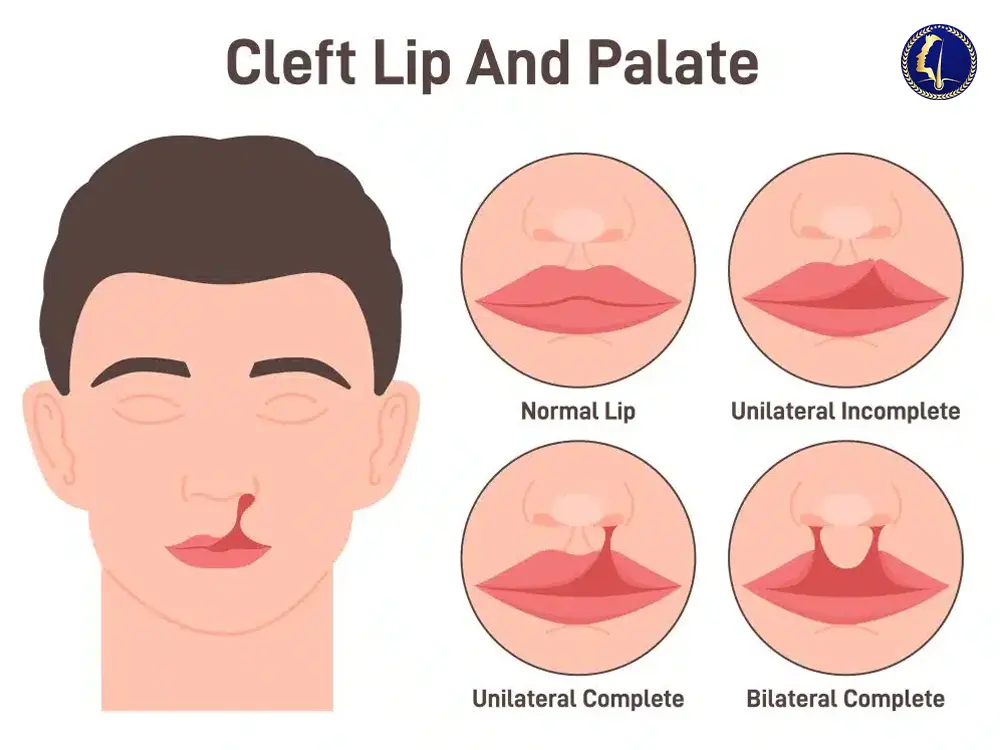
Individuals born with a cleft lip or palate often face both physical and psychological challenges due to the distinctive scar on their lips. This congenital condition can result in difficulties related to speech, eating, and even self-confidence. One of the aesthetic solutions gaining popularity in recent years is the moustache transplant, an innovative procedure that helps men with a cleft palate enhance their appearance and self-esteem. Glojas Smart International Aesthetic, a renowned clinic in Kuala Lumpur, is at the forefront of offering such procedures to individuals who wish to restore a more natural look to their facial features. Founded by the well-known aesthetic surgeon, Dato’ Dr. JasG, Glojas Clinic offers a range of cosmetic procedures, including hair transplants for the scalp, beard, and moustache, to help individuals reclaim their confidence. The Importance of Moustache Transplants for Men with Cleft Palate Resources : https://www.thestar.com.my/metro/metro-news/2019/07/29/moustache-transplant-for-men-with-cleft-palate/ For men with a cleft palate, the lack of a fully formed moustache or facial hair can accentuate the appearance of their cleft scar. Many of these men feel self-conscious and may struggle with their body image, especially in societies where facial hair is associated with masculinity and maturity. Moustache transplants provide a unique solution to this problem. By transplanting hair follicles into the area above the lip, the procedure can help conceal the cleft scar, allowing the individual to achieve a more conventional facial appearance. This, in turn, can boost their self-esteem and confidence in social interactions. Dato’ Dr. JasG of Glojas Clinic emphasizes that the procedure is not purely cosmetic. “Moustache transplants can significantly improve the quality of life for men with a cleft palate by offering them a chance to redefine their identity,” he states. The clinic has performed numerous transplants for men with this condition, witnessing firsthand the transformative impact on their clients’ lives. The Procedure: How Moustache Transplants Work The moustache transplant procedure at Glojas Clinic is conducted using advanced techniques to ensure natural and long-lasting results. The procedure involves extracting hair follicles from a donor area—usually the back of the scalp—and implanting them into the upper lip area where the moustache is meant to grow. The procedure typically involves the following steps: Consultation: A thorough consultation is conducted with the client to understand their specific needs, facial structure, and the extent of the cleft scar. This step is crucial to create a customized treatment plan that will provide the best aesthetic outcome. Hair Extraction: Hair follicles are harvested from the donor area using a technique called Follicular Unit Extraction (FUE). FUE is a minimally invasive method that leaves no visible scarring, making it ideal for those who want to maintain a natural appearance. Implantation: The extracted hair follicles are meticulously implanted into the upper lip area. The direction, angle, and density of the hair placement are carefully controlled to mimic the natural growth pattern of a moustache. This attention to detail ensures a seamless and realistic result. Recovery: After the procedure, the client can expect some mild swelling and redness, which typically subsides within a few days. Full results can be seen within 6-12 months as the transplanted hair grows in and takes on the characteristics of a natural moustache. Dato’ Dr. JasG notes that the moustache transplant procedure is relatively simple, with minimal downtime. Most clients can resume their normal activities within a few days, though they are advised to avoid strenuous physical activity for a short period post-procedure to ensure optimal healing. Glojas Clinic: A Leader in Hair Restoration Glojas Smart International Aesthetic has earned a reputation for excellence in hair restoration procedures. Led by Dato’ Dr. JasG, the clinic is equipped with state-of-the-art technology and a highly skilled team of medical professionals. Glojas Clinic’s commitment to individualized care and natural-looking results has made it a preferred choice for hair transplants, including moustache transplants for men with cleft palate. Dato’ Dr. JasG, a pioneer in aesthetic medicine, has extensive experience in performing moustache transplants. His approach involves a meticulous understanding of facial anatomy and hair growth patterns, which is crucial for achieving a natural and aesthetically pleasing result. By tailoring each procedure to the client’s unique facial structure and needs, he ensures that the outcome not only looks natural but also boosts the client’s confidence. Benefits of Moustache Transplant 1. Enhanced Aesthetics: One of the primary advantages of a moustache transplant is the improvement in facial aesthetics. A full, well-groomed moustache can enhance facial symmetry and create a more balanced appearance, helping individuals feel more confident in their looks. 2. Restoration of Masculinity: For many individuals, a moustache is a symbol of masculinity. A successful transplant allows for the restoration of this aspect of identity, enabling individuals to embrace their sense of self. 3. Improved Self-Esteem: The psychological impact of facial hair on self-image cannot be underestimated. A successful moustache transplant can lead to increased self-esteem, allowing individuals to engage more freely in social situations and relationships without the constant concern about their appearance. 4. Natural-Looking Results: Today’s advanced hair transplant techniques allow for natural-looking results. The hair follicles are expertly implanted to mimic the natural growth pattern of facial hair, resulting in a moustache that complements the individual’s unique facial structure. 5. Long-lasting Solution: Unlike temporary solutions such as makeup or fake moustaches, a moustache transplant provides a permanent solution. Once the transplanted hair follicles establish themselves and start growing, individuals can enjoy their moustache without ongoing maintenance or products. 6. Boost in Confidence: For those who have faced emotional difficulties stemming from their appearance due to cleft palate, the act of undergoing a moustache transplant can be transformative. It symbolizes taking control over one’s own identity, fostering a newfound confidence that can permeate all aspects of life. 7. Cultural Acceptance: In many cultures, facial hair carries significant social meaning. A moustache can signify maturity, wisdom, and social standing. Moustache transplants can help individuals align their appearance with cultural expectations, enhancing their acceptance and integration into their communities. The Psychological Impact of Moustache Transplants For men with a
Malaysia Book of Records: Glojas Clinic Wins 5 Multiple Differences Awards for Hair Transplant Excellence in Malaysia
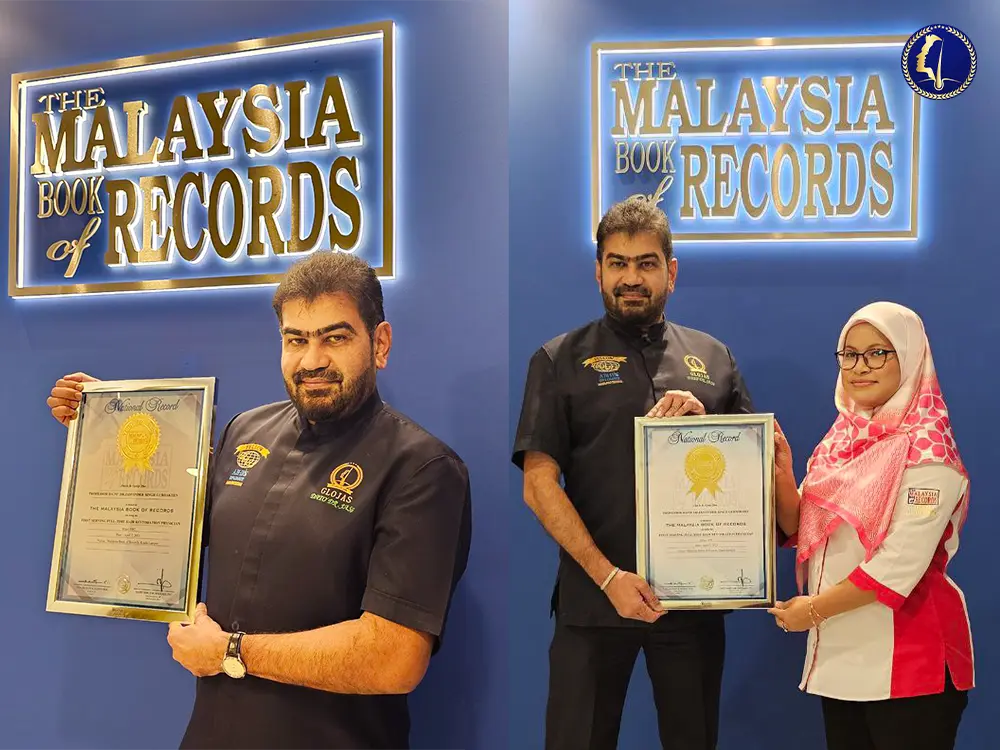
Glojas Clinic, a renowned aesthetic and hair restoration center in Malaysia, has achieved a remarkable milestone by securing five distinguished listings in the Malaysia Book of Records. These honors recognize the clinic’s relentless pursuit of excellence in the field of hair restoration surgery and aesthetic medicine. Spearheaded by the highly esteemed Dato’ Dr. Jasvinder Singh Gurbakhes, also known as Dato’ Dr. JasG, Glojas Aesthetic Clinic has set numerous national benchmarks for pioneering techniques and practices. This article celebrates the achievements of Glojas Clinic, listing out the categories based on the certificates presented and detailing the clinic’s dedication to groundbreaking medical practices. A Closer Look at Glojas Clinic’s Recognitions Glojas Clinic has been conferred with five significant titles in the Malaysia Book of Records, cementing its position as a leader in hair restoration and aesthetic medicine. Each of these recognitions highlights the clinic’s commitment to excellence and innovation. The following are the detailed categories and achievements: 1. First Hair Transplant Physician Using Follicular Unit Excision (FUE) & Follicular Unit Transplantation (FUT) Technique Certificate Date: July 18, 2022 Venue: Malaysia Book of Records, Kuala Lumpur Dato’ Dr. Jasvinder Singh Gurbakhes (Dato’ Dr. JasG) has been recognized as the first hair transplant physician in Malaysia to use both Follicular Unit Excision (FUE) and Follicular Unit Transplantation (FUT) techniques. These are advanced methods in hair transplant malaysia surgery, offering patients a minimally invasive and highly effective solution for hair restoration. Dato’ Dr. JasG’s proficiency in employing both techniques underlines Glojas Clinic’s dedication to providing tailored, cutting-edge treatments to address various hair loss conditions. 2. First Hair Diplomat Physician of the American Board of Hair Restoration Surgery (ABHRS) Certificate Date: July 18, 2022 Venue: Malaysia Book of Records, Kuala Lumpur Since: 2014 Dato’ Dr. Jasvinder Singh Gurbakhes made history by becoming the first Malaysian hair diplomat physician certified by the prestigious American Board of Hair Restoration Surgery (ABHRS). Since 2014, he has upheld the highest standards of practice in hair restoration surgery, reflecting Glojas Clinic’s commitment to international excellence and quality in aesthetic medicine. The ABHRS is a globally recognized certifying body, and this accomplishment speaks volumes about the clinic’s competence in the field of hair restoration. 3. First Serving Full-Time Hair Restoration Physician Certificate Date: April 7, 2023 Venue: Malaysia Book of Records, Kuala Lumpur Since: 1997 Glojas Clinic takes pride in being the first clinic in Malaysia to have a full-time hair restoration physician since 1997. Dato’ Dr. Jasvinder Singh Gurbakhes, with his vast experience and dedication, has been offering comprehensive hair restoration solutions for over two decades. This recognition attests to Glojas Clinic’s unwavering dedication to providing specialized, full-time care to patients seeking hair restoration services. 4. First Hair Transplant Physician Using Highly Skilled Re-Follicular Unit Excision Certificate Date: October 26, 2023 Venue: Malaysia Book of Records, Kuala Lumpur Since: 1997 Another significant achievement for Glojas Clinic is being recognized for utilizing highly skilled re-follicular unit excision techniques. Since 1997, Dato’ Dr. Jasvinder Singh Gurbakhes has been at the forefront of hair restoration innovations, perfecting re-follicular unit excision procedures that result in natural and aesthetically pleasing hair restoration outcomes. This title reaffirms the clinic’s status as a pioneer in hair transplant surgery. 5. First Conferred Fellowship of the International Society of Hair Restoration Surgery (FISHRS) Certificate Date: July 18, 2022 Venue: Malaysia Book of Records, Kuala Lumpur Since: 2020 The final recognition that adds to Glojas Clinic’s list of accolades is for being the first recipient in Malaysia of the conferred fellowship from the International Society of Hair Restoration Surgery (FISHRS). Since 2020, Dato’ Dr. Jasvinder Singh Gurbakhes has held this esteemed fellowship, showcasing his commitment to maintaining the highest professional standards in hair restoration surgery. The FISHRS fellowship is a mark of expertise and excellence, validating Dato’ Dr. JasG’s proficiency and dedication to advancing hair restoration practices. Conclusion Glojas Clinic, under the expert leadership of Dato’ Dr. Jasvinder Singh Gurbakhes, has achieved an extraordinary feat by securing five recognitions in the Malaysia Book of Records. These accolades are a testament to the clinic’s dedication to pioneering and implementing advanced techniques in hair restoration surgery. From being the first to utilize the FUE and FUT techniques to holding international certifications, Glojas Clinic’s milestones serve as an inspiration in the field of aesthetic medicine. For individuals seeking world-class hair restoration treatments, Glojas Clinic offers a combination of experience, innovative techniques, and a commitment to excellence, making it a top choice in Malaysia. To explore their services and learn more about their expertise, visit their official website: glojasaesthetic.com. Acknowledgment These recognitions highlight not only the clinic’s outstanding contributions to the medical aesthetic field but also Dato’ Dr. Jasvinder Singh Gurbakhes’s exceptional skills and dedication to his craft. As a full-time hair restoration physician and a pioneer in the field, Dato’ Dr. JasG has set a benchmark for quality and professionalism that continues to inspire both patients and practitioners in Malaysia and beyond. Summary of Achievements: First Hair Transplant Physician Using Follicular Unit Excision (FUE) & Follicular Unit Transplantation (FUT) Technique – July 18, 2022 First Hair Diplomat Physician of the American Board of Hair Restoration Surgery (ABHRS) – July 18, 2022 First Serving Full-Time Hair Restoration Physician – April 7, 2023 First Hair Transplant Physician Using Highly Skilled Re-Follicular Unit Excision – October 26, 2023 First Conferred Fellowship of the International Society of Hair Restoration Surgery (FISHRS) – July 18, 2022 These accolades not only distinguish Glojas Clinic as a premier destination for hair restoration but also reinforce its legacy of innovation, expertise, and patient-centered care.
Hair Transplant Miracle: 7 Incredible Benefits You Need to Know
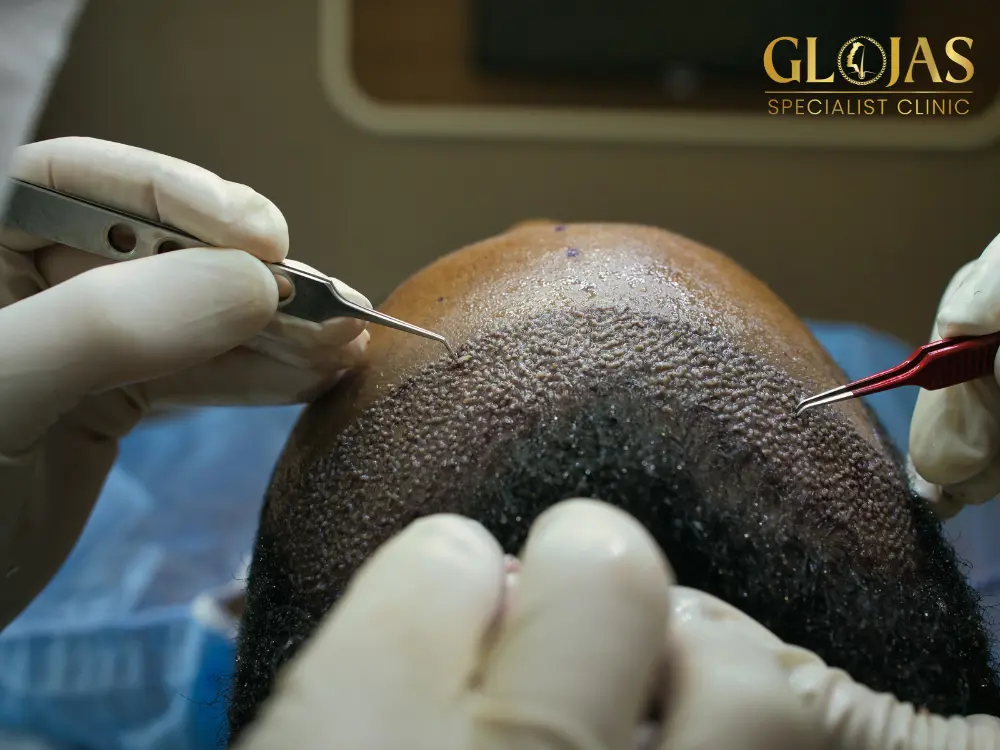
Hair loss can be a distressing experience for many, leading to a loss of confidence and self-esteem. Thankfully, modern medical advancements have made hair transplant procedures not only accessible but also highly effective. If you’re considering this option, it’s essential to understand what a hair transplant entails and the transformative benefits it can bring. This comprehensive guide will explore everything you need to know about hair transplants, from the procedure itself to the incredible benefits and frequently asked questions. What is a Hair Transplant? A hair transplant is a surgical procedure that involves moving hair follicles from one part of the body, usually the back or sides of the scalp (known as the donor area), to the thinning or balding areas (the recipient area). This procedure is primarily used to treat male pattern baldness but is also effective for women experiencing hair thinning or bald spots. Types of Hair Transplant Procedures There are two main types of hair transplant techniques: Follicular Unit Transplantation (FUT): This traditional method involves removing a strip of skin from the donor area, from which individual hair follicles are extracted and transplanted to the recipient area. Follicular Unit Extraction (FUE): A more modern technique where individual hair follicles are directly extracted from the donor area and implanted into the recipient area. FUE is less invasive and leaves minimal scarring. The Hair Transplant Procedure: What to Expect Understanding the hair transplant process can help alleviate any concerns you might have and set realistic expectations. Here’s a step-by-step overview of what typically happens during a hair transplant: 1. Initial Consultation Before the procedure, you’ll have a consultation with a hair transplant specialist. During this session, the doctor will evaluate your hair loss, discuss your medical history, and determine the best treatment plan tailored to your needs. 2. Preparing for the Surgery On the day of the surgery, the donor area is trimmed, and local anesthesia is administered to numb the scalp. This ensures that you remain comfortable throughout the procedure. 3. Harvesting Hair Follicles Depending on the method chosen (FUT or FUE), hair follicles are either extracted in a strip or individually. These follicles are then carefully prepared for transplantation. 4. Implanting the Hair Follicles The surgeon creates tiny incisions in the recipient area and meticulously implants the prepared hair follicles. This is done with precision to ensure that the hair grows in a natural direction. 5. Post-Surgery Care After the procedure, you may experience some swelling and discomfort, which is manageable with prescribed medication. The doctor will provide specific aftercare instructions to promote healing and optimize results. 7 Incredible Benefits of Hair Transplants A hair transplant can significantly enhance your appearance and quality of life. Below are seven remarkable benefits that make this procedure worth considering: 1. Permanent Results One of the most significant advantages of a hair transplant is its permanence. Unlike temporary solutions such as wigs or hairpieces, transplanted hair is resistant to the effects of DHT (dihydrotestosterone), the hormone responsible for hair loss. 2. Natural-Looking Hair When performed by a skilled surgeon, a hair transplant can deliver incredibly natural results. The transplanted hair blends seamlessly with your existing hair, making it virtually undetectable. 3. Boost in Self-Confidence Hair loss can take a toll on your self-esteem. A successful hair transplant can restore not only your hair but also your confidence, helping you feel more positive and self-assured. 4. Low Maintenance Transplanted hair requires minimal maintenance compared to other hair restoration methods. Once the new hair begins to grow, you can treat it just like your natural hair—no special shampoos or treatments needed. 5. Cost-Effective in the Long Run Although the upfront cost of a hair transplant can be high, it’s a one-time investment. Unlike other treatments that require continuous spending, a hair transplant provides a permanent solution, making it cost-effective over time. 6. Minimal Downtime Thanks to advancements in technology, modern hair transplant techniques like FUE have minimal downtime. Most patients can return to their normal activities within a few days. 7. Improved Hair Density A hair transplant not only covers bald spots but also improves the overall density of your hair, giving you a fuller and more youthful appearance. Are You a Good Candidate for a Hair Transplant? While hair transplants can be life-changing, they may not be suitable for everyone. The ideal candidate typically has the following characteristics: Stable Hair Loss: Candidates should have a stable pattern of hair loss with sufficient donor hair available. Good Health: Being in good overall health reduces the risks associated with surgery and improves healing outcomes. Realistic Expectations: Understanding the potential results and limitations of the procedure is crucial for satisfaction. FAQs About Hair Transplants 1. How long does it take to see the results of a hair transplant? Most patients begin to see noticeable hair growth within 3 to 4 months post-surgery, with full results typically visible after 12 to 18 months. 2. Are there any risks or side effects associated with hair transplants? As with any surgical procedure, there are some risks, including infection, scarring, and temporary shedding of transplanted hair. However, these risks are minimal when the procedure is performed by an experienced surgeon. 3. Is a hair transplant painful? The procedure itself is performed under local anesthesia, so you won’t feel pain during the surgery. Some discomfort may occur during recovery, but this can be managed with medication. 4. Can women undergo hair transplants? Yes, women experiencing hair thinning or bald spots can benefit from hair transplants. However, a thorough consultation with a specialist is necessary to determine suitability. 5. How much does a hair transplant cost? The cost of a hair transplant varies depending on factors like the extent of hair loss, the technique used, and the surgeon’s experience. On average, it can range from $4,000 to $15,000. 6. Will I need another hair transplant in the future? In most cases, a single hair transplant provides lasting results. However, if hair loss continues in untreated areas, you may require additional
10 Powerful Ways to Address Gynecomastia: Understanding and Overcoming the Condition

Gynecomastia, commonly known as “man boobs,” is a condition characterized by the enlargement of breast tissue in men. It can affect one or both breasts and may cause significant physical and emotional distress. While the condition itself is not usually serious, it can lead to self-esteem issues and discomfort, making it important to address both the physical and psychological aspects of gynecomastia. This article explores the causes, symptoms, and most effective treatments for gynecomastia, along with practical steps to manage the condition. Understanding Gynecomastia: Causes and Symptoms What is Gynecomastia? Gynecomastia is the benign enlargement of male breast tissue. It differs from pseudogynecomastia, which is fat accumulation in the chest area due to obesity. True gynecomastia is caused by an imbalance between the hormones estrogen and testosterone. This imbalance leads to the growth of glandular tissue in the male breast. Common Causes of Gynecomastia There are several factors that can lead to gynecomastia, including: Hormonal Imbalance: The most common cause of gynecomastia is a hormonal imbalance, specifically an increase in estrogen or a decrease in testosterone. This can occur naturally during puberty, aging, or due to certain health conditions. Medications: Certain medications, such as anti-androgens, anabolic steroids, antidepressants, and some heart medications, can contribute to the development of gynecomastia. Substance Abuse: The use of substances like alcohol, marijuana, and certain drugs can also lead to gynecomastia by affecting hormone levels. Health Conditions: Conditions such as hyperthyroidism, kidney failure, liver disease, and tumors can lead to gynecomastia by disrupting normal hormone production and regulation. Obesity: While not a direct cause, obesity can exacerbate the condition by increasing the amount of estrogen produced by fat tissue, leading to further breast tissue development. Recognizing the Symptoms of Gynecomastia The primary symptom of gynecomastia is the enlargement of breast tissue. This may be accompanied by tenderness or pain in the breast area. In some cases, a rubbery or firm mass may be felt beneath the nipple area. It’s important to note that gynecomastia can affect one or both breasts and may cause uneven growth. Effective Treatments for Gynecomastia 1. Lifestyle Changes For many men, lifestyle changes can significantly impact the severity of gynecomastia. Reducing body fat through a healthy diet and regular exercise can help decrease the size of the breast tissue. Strength training, particularly chest exercises, can improve muscle tone and reduce the appearance of enlarged breasts. 2. Medication Adjustments If gynecomastia is caused by medication, consulting with a healthcare provider about alternative treatments may be beneficial. In some cases, switching to a different medication can alleviate the condition. 3. Hormone Therapy Hormone therapy can be an effective treatment for gynecomastia, particularly if the condition is due to a hormonal imbalance. Treatments such as testosterone replacement therapy or medications that block estrogen production can help restore balance and reduce breast tissue growth. 4. Surgical Intervention In cases where gynecomastia is severe or persistent, surgical intervention may be necessary. The two most common surgical options are: Liposuction: This procedure removes excess fat but does not affect the glandular tissue of the breast. Mastectomy: This surgery involves the removal of the glandular tissue. It can be done with minimally invasive techniques, reducing recovery time and scarring. 5. Psychological Support Gynecomastia can have a significant psychological impact, leading to embarrassment, anxiety, and depression. Seeking support from a counselor or therapist can help manage the emotional aspects of the condition. Support groups, whether online or in-person, can also provide a sense of community and shared experience. 6. Avoiding Triggers Avoiding the substances and medications that contribute to gynecomastia can prevent the condition from worsening. This includes limiting alcohol consumption, avoiding recreational drugs, and discussing any concerns about prescription medications with a doctor. 7. Monitoring Underlying Health Conditions If gynecomastia is linked to a health condition, such as hyperthyroidism or kidney failure, managing the underlying condition is crucial. Regular monitoring and treatment of these conditions can prevent the progression of gynecomastia. 8. Compression Garments For men looking for a non-surgical solution, compression garments can help flatten the appearance of the chest and provide psychological comfort. These garments are available in a variety of styles and can be worn discreetly under clothing. 9. Natural Remedies Some natural remedies may offer relief for gynecomastia, though scientific evidence is limited. Ingredients like turmeric and zinc have been suggested to support hormone balance, but it’s essential to consult with a healthcare provider before starting any natural treatment. 10. Regular Monitoring For individuals with gynecomastia, regular monitoring is important. This includes self-examinations and medical check-ups to ensure that the condition is not worsening or linked to more serious health issues. In some cases, gynecomastia can be a sign of a hormone-secreting tumor, which would require prompt medical attention. FAQs About Gynecomastia 1. Is gynecomastia permanent? Gynecomastia is not always permanent. In many cases, particularly in adolescents, the condition resolves on its own as hormone levels stabilize. However, in adults, it may persist and require treatment. 2. Can weight loss cure gynecomastia? Weight loss can reduce the fatty component of the chest but may not fully eliminate gynecomastia if glandular tissue is present. In such cases, additional treatments like surgery may be necessary. 3. How can I tell if I have gynecomastia or just fat? Gynecomastia involves the growth of glandular tissue, which feels firm or rubbery, unlike the softer fat tissue of pseudogynecomastia. A healthcare provider can perform a physical exam to determine the difference. 4. Is gynecomastia a sign of breast cancer? While gynecomastia is generally benign, it is important to rule out breast cancer, especially if there is a hard lump, nipple discharge, or skin changes. Consult a doctor for a proper diagnosis. 5. Can gynecomastia return after treatment? Gynecomastia can return if the underlying cause is not addressed, such as continued use of certain medications or hormone imbalances. Regular follow-up with a healthcare provider is recommended. 6. Are there non-surgical treatments for gynecomastia? Yes, non-surgical treatments include lifestyle changes, hormone therapy, and the use of compression garments. These methods
10 Effective Ways to Manage Pigmentation for Flawless Skin
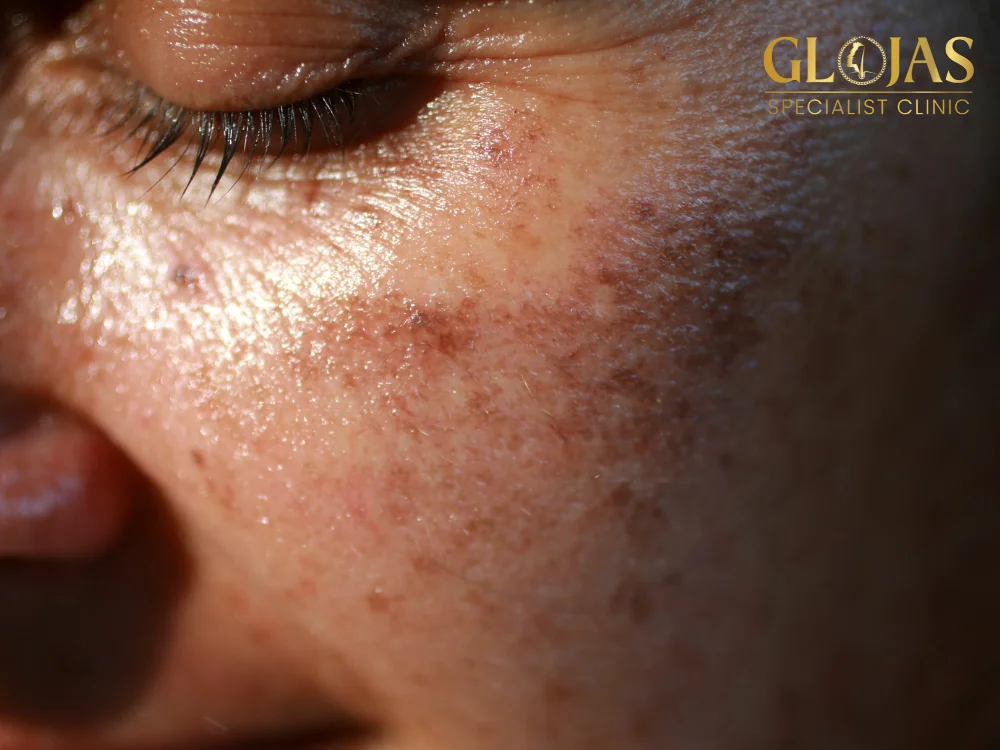
Pigmentation issues can be a frustrating concern for many people. Whether it’s age spots, melasma, or post-inflammatory hyperpigmentation, uneven skin tone can affect your confidence and overall appearance. However, the good news is that pigmentation can be effectively managed with the right strategies and treatments. In this article, we’ll explore 10 powerful ways to combat pigmentation and achieve flawless skin. Understanding Pigmentation: What Causes It? Pigmentation refers to the coloring of the skin caused by melanin, the pigment produced by melanocytes in the skin. When melanin is produced in excess, it can lead to dark spots or patches on the skin. Several factors contribute to this condition, including: Sun exposure: UV radiation from the sun stimulates melanin production, leading to sunspots or age spots. Hormonal changes: Conditions like pregnancy or the use of birth control pills can trigger melasma, a form of pigmentation. Inflammation: Acne, eczema, or any skin injury can cause post-inflammatory hyperpigmentation, where the skin darkens as it heals. Genetics: Some people are more prone to pigmentation issues due to their genetic makeup. Top 10 Ways to Manage Pigmentation 1. Use Sunscreen Daily One of the most effective ways to prevent and manage pigmentation is to use sunscreen daily. A broad-spectrum sunscreen with an SPF of at least 30 can protect your skin from harmful UV rays, which are a major cause of pigmentation. Apply it generously every morning and reapply every two hours when outdoors. 2. Incorporate Vitamin C into Your Skincare Routine Vitamin C is a potent antioxidant that helps brighten the skin and reduce the appearance of dark spots. It inhibits melanin production and can lighten existing pigmentation over time. Look for serums containing L-ascorbic acid, the most effective form of vitamin C, and use them in the morning before applying sunscreen. 3. Try Chemical Peels Chemical peels are a popular treatment for pigmentation. They involve applying a chemical solution to the skin, which exfoliates the top layers and promotes the growth of new, even-toned skin. Mild peels like glycolic acid or lactic acid can be done at home, while deeper peels should be performed by a dermatologist. 4. Use Retinoids Retinoids, derivatives of vitamin A, are known for their ability to promote cell turnover and reduce pigmentation. They work by speeding up the shedding of pigmented cells and encouraging the growth of new, healthy skin. Retinoids can be found in both over-the-counter products and prescription-strength formulations. 5. Consider Laser Treatments For stubborn pigmentation that doesn’t respond to topical treatments, laser therapy might be an option. Lasers target melanin and break up pigmentation, leading to a more even skin tone. Multiple sessions may be required, and it’s important to consult a qualified dermatologist to determine if this is the right treatment for you. 6. Use Niacinamide Niacinamide, also known as vitamin B3, is another effective ingredient for managing pigmentation. It helps reduce the transfer of melanin to the skin’s surface, resulting in a more even skin tone. Niacinamide is gentle on the skin, making it suitable for those with sensitive skin or conditions like rosacea. 7. Apply Licorice Extract Licorice extract contains glabridin, a compound that inhibits the enzyme responsible for melanin production. Regular use of products containing licorice extract can help lighten dark spots and reduce pigmentation without irritating the skin. 8. Avoid Picking or Scratching Your Skin One of the simplest ways to prevent post-inflammatory hyperpigmentation is to avoid picking or scratching your skin. This can be particularly challenging if you have acne, but picking can lead to inflammation, which triggers excess melanin production as the skin heals. 9. Exfoliate Regularly Regular exfoliation can help remove dead skin cells and allow for better absorption of pigmentation treatments. However, it’s important to exfoliate gently to avoid causing irritation, which can exacerbate pigmentation. Use a mild exfoliant, like a glycolic acid toner, 2-3 times a week. 10. Maintain a Healthy Diet A balanced diet rich in antioxidants, vitamins, and minerals can support skin health and reduce pigmentation. Foods high in vitamin C, vitamin E, and omega-3 fatty acids, such as citrus fruits, nuts, and fatty fish, can help protect your skin from oxidative stress and promote an even complexion. Frequently Asked Questions about Pigmentation What are the most common types of pigmentation? The most common types of pigmentation include sunspots (age spots), melasma, and post-inflammatory hyperpigmentation. Each has different causes but can be managed with similar treatments. Can pigmentation be completely cured? While pigmentation can often be significantly reduced, it may not be completely cured, especially if the underlying cause persists. However, with consistent treatment and sun protection, many people see dramatic improvements. How long does it take to see results from pigmentation treatments? Results from pigmentation treatments can vary. Topical treatments like vitamin C or retinoids may take several weeks to show improvement, while in-office treatments like chemical peels or lasers can yield faster results. Is pigmentation only a cosmetic issue? While pigmentation is primarily a cosmetic concern, it can also impact a person’s confidence and self-esteem. In rare cases, certain types of pigmentation may be indicative of underlying health issues, so it’s always a good idea to consult with a dermatologist. Can home remedies help with pigmentation? Some home remedies, like aloe vera or apple cider vinegar, may offer mild benefits for pigmentation. However, these are usually less effective than clinically proven treatments and should be used with caution. What should I avoid if I have pigmentation? If you have pigmentation, avoid excessive sun exposure, picking or scratching your skin, and using harsh skincare products that can cause irritation or inflammation. Note: Managing pigmentation requires patience and consistency. Combining professional treatments with a solid skincare routine can yield the best results over time.
Aesthetic Clinic : Best Anti-Aging Solutions Available in Malaysia
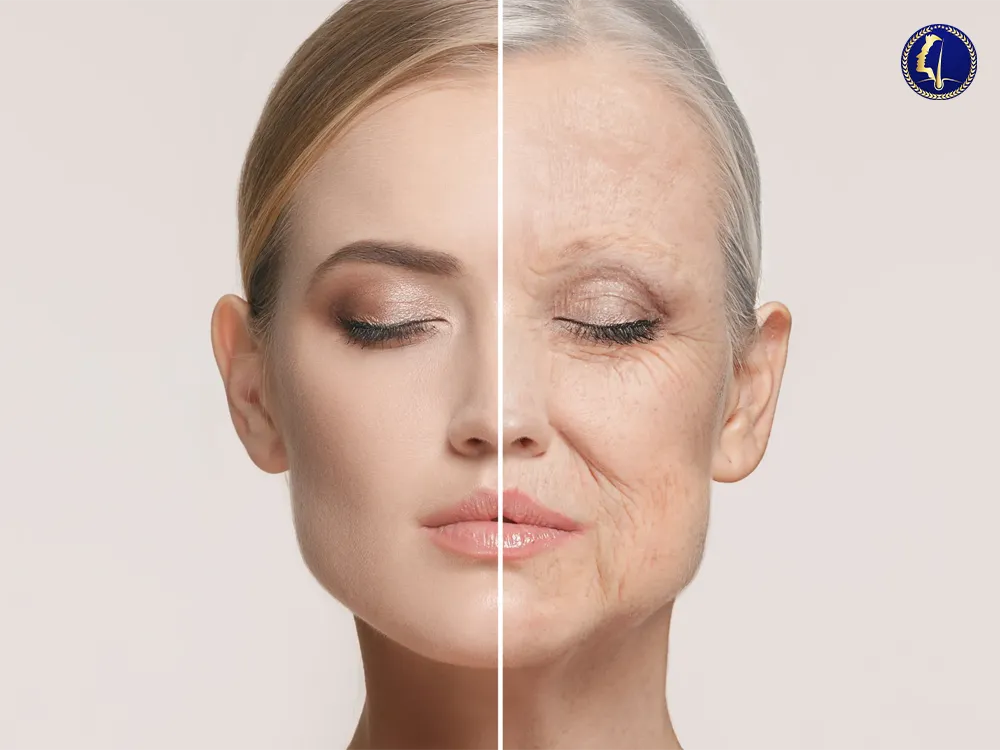
Aesthetic clinic in Malaysia are becoming the go-to destinations for individuals looking to combat the signs of aging. With advancements in medical aesthetics, several treatments have emerged that offer effective and non-surgical solutions to restore youthful skin. Among the most popular are PRP (Platelet-Rich Plasma) therapy, microneedling, and HIFU (High-Intensity Focused Ultrasound). In this blog, we will explore how these treatments work, their benefits, and their costs in Malaysia. 1. Platelet-Rich Plasma (PRP) Therapy PRP therapy is an innovative anti-aging treatment that uses a patient’s own blood to rejuvenate the skin. The procedure involves extracting a small amount of blood, separating the plasma from the red blood cells using a centrifuge, and then injecting the plasma back into the face. How Does PRP Work? PRP is rich in growth factors that stimulate collagen production and accelerate cell regeneration. The treatment addresses various skin concerns such as fine lines, wrinkles, and sun damage, making it an effective solution for restoring youthfulness. Benefits of PRP Therapy: Natural healing: Since the plasma is derived from the patient’s own blood, there is minimal risk of allergic reactions or side effects. Improved skin texture: PRP enhances collagen production, resulting in smoother, firmer skin. Minimally invasive: The procedure requires no downtime, and patients can resume their daily activities right after treatment. Cost in Malaysia: In Malaysia, PRP therapy typically costs between RM 1,000 to RM 2,500 per session, depending on the clinic and the number of sessions required 2. Microneedling Microneedling, also known as collagen induction therapy, involves the use of tiny needles to create controlled micro-injuries in the skin. This stimulates the body’s natural healing process, encouraging collagen and elastin production, which are key to maintaining youthful skin. How Does Microneedling Work? The procedure creates microchannels in the skin, which enhances the absorption of skincare products and encourages skin regeneration. Over time, it helps reduce the appearance of wrinkles, fine lines, and acne scars. Benefits of Microneedling: Increased collagen production: Promotes skin regeneration and combats the signs of aging. Reduced acne scars: Effective for those looking to improve the texture and appearance of their skin. Minimal downtime: Recovery time is usually minimal, with redness subsiding within 24-48 hours. Cost in Malaysia: Microneedling treatments in Malaysia cost approximately RM 600 to RM 1,500 per session, depending on the clinic and the area being treated. 3. High-Intensity Focused Ultrasound (HIFU) HIFU is a non-invasive, FDA-approved treatment that uses ultrasound energy to stimulate the deep layers of the skin, tightening it and promoting collagen production. This treatment is often referred to as a “non-surgical facelift” due to its ability to lift and tighten the skin. How Does HIFU Work? HIFU delivers focused ultrasound waves to the deeper layers of the skin, targeting the SMAS (Superficial Musculoaponeurotic System) layer. By heating the tissues, it stimulates collagen production, resulting in tighter and firmer skin. Benefits of HIFU: Non-invasive: No surgery or injections are required, making it a safer alternative to traditional facelifts. Long-lasting results: Results can last up to 12 months after the procedure. Lifting effect: HIFU can lift the skin on the face, neck, and décolletage, reducing the appearance of sagging skin. Cost in Malaysia: HIFU treatment in Malaysia ranges from RM 2,000 to RM 4,500 per session, depending on the area treated and the clinic. Why Choose Aesthetic Clinic in Malaysia? Malaysia is emerging as a top destination for medical tourism, offering world-class treatments at more affordable prices compared to Western countries. Aesthetic clinics in Malaysia are known for their skilled practitioners, state-of-the-art equipment, and personalized care. Treatments like PRP, microneedling, and HIFU are widely available, and many clinics, such as Glojas Clinic, offer free consultations for patients looking to explore these options. Glojas Clinic, located in Kuala Lumpur, is one of the pioneers in FUE (Follicular Unit Extraction) hair transplants and aesthetic treatments, including anti-aging solutions. Under the expertise of Dato Dr. Jas G, a specialist hair transplant in malaysia, the clinic provides cutting-edge treatments with a focus on natural-looking results and minimal downtime. Free Consultations for Aesthetic Treatments For those interested in exploring anti-aging solutions, Glojas Clinic offers free consultations where patients can discuss their concerns and receive personalized treatment plans. This allows potential clients to make informed decisions before committing to a procedure. FAQs about Anti-Aging Treatments in Malaysia What is the best anti-aging treatment for sensitive skin?For sensitive skin, PRP therapy is often recommended as it uses the patient’s own blood plasma, minimizing the risk of adverse reactions. The natural healing properties of PRP make it suitable for all skin types. How many sessions of microneedling are needed for visible results?Visible results can typically be seen after 3 to 6 sessions of microneedling, spaced about 4-6 weeks apart. The number of sessions depends on the condition of the skin and the desired outcome. What is the recovery time for HIFU treatment?One of the benefits of HIFU is its minimal downtime. Patients can resume their normal activities immediately after the procedure, although some may experience mild redness or swelling for a few hours. How much do anti-aging treatments cost in Malaysia? PRP therapy: RM 1,000 – RM 2,500 per session. Microneedling: RM 600 – RM 1,500 per session. HIFU: RM 2,000 – RM 4,500 per session. Can I get a free consultation for aesthetic treatments in Malaysia?Yes, clinics like Glojas Aesthetic Clinic offer free consultations, allowing you to discuss your treatment options with a specialist before proceeding. Conclusion The anti-aging treatments available in Malaysia, such as PRP therapy, microneedling, and HIFU, offer effective, non-invasive solutions to combat the signs of aging. These treatments not only provide immediate visible results but also promote long-term skin health by stimulating collagen production. Whether you’re looking to smooth out wrinkles or tighten sagging skin, Malaysian aesthetic clinics provide high-quality care at competitive prices, making them an attractive option for individuals seeking age-reversal solutions. For those interested, Glojas Clinic in Kuala Lumpur offers free consultations to help you determine the best treatment plan tailored to your skin needs. With
